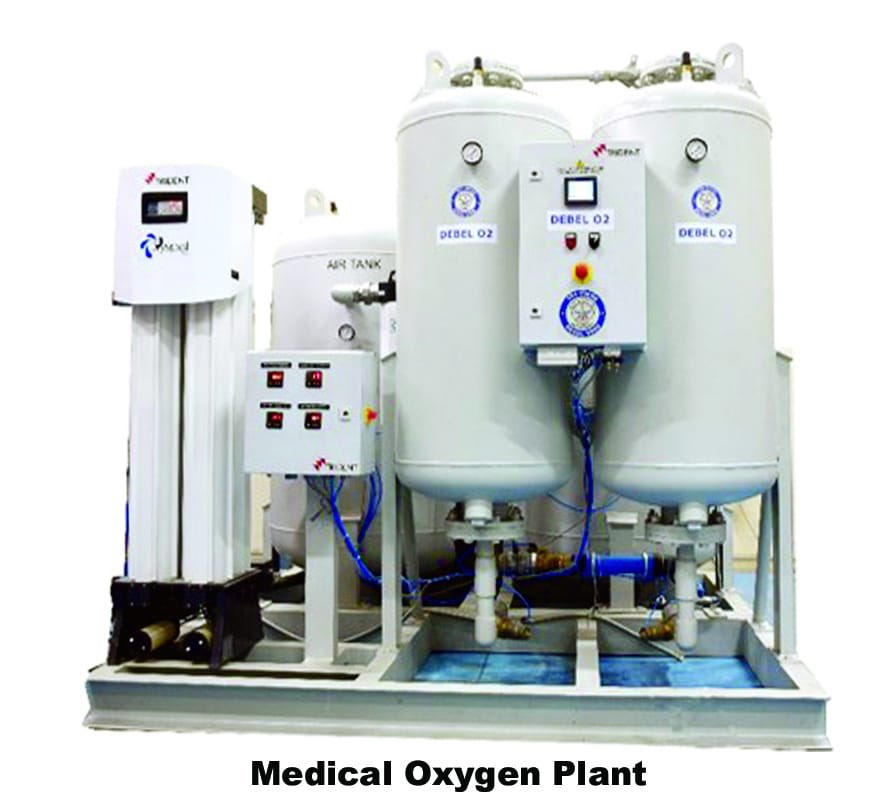
How much oxygen does a COVID patient need? Here's a quick analysis
The value of oxygen was never felt to the extent it is being felt today and words like SPO2, liquid medical oxygen and oxygen concentrators have entered the colloquial usage. However, when we talk of oxygen requirement, it is pertinent to know how much oxygen does a COVID patient really need.

The value of oxygen was never felt to the extent it is being felt today and words like SPO2, liquid medical oxygen and oxygen concentrators have entered the colloquial usage. However, when we talk of oxygen requirement, it is pertinent to know how much oxygen does a COVID patient really need.
Here’s a quick look at the production of oxygen, methods of supply and requirement.
The oxygen taken in by patients is called medical oxygen or industrial oxygen, which is manufactured in dedicated manufacturing units and is filtered over 90% so that patients in dire need have to make minimal efforts to inhale it into lungs. Severe COVID patients (less than 10% right now) require medical oxygen because their lungs cannot use the oxygen naturally available in the air. A fraction of such patients need high flow nasal cannula (HFNC).
It is difficult to measure how much oxygen does a COVID patient need, but it could be anything in the range of one litre a minute to 60 litres a minute.
What is the need for oxygen in a COVID patient?
On average, a normal healthy adult exhales about 75% of the oxygen he inhales from the air, which contains 21 per cent oxygen. The difference of the oxygen inhaled and exhaled is the actual lung requirement. Doctors say infection caused by coronavirus reduces the ability of lungs to absorb oxygen directly from the air. If the patient’s lungs do not get the necessary oxygen, supplementary provision needs to be made.
Medical oxygen is required when dissolved oxygen level in blood drops below 90 per cent (can be tested using an oximeter). A good way to measure oxygen in body could be to make the COVID patient walk for six minutes and measure the levels using oximeter – before and after the walk. If the oxygen level drops instead of going up (with a difference of 1-3%) then doctor’s intervention may be required. Breathlessness during the walk would mean the body is not getting enough oxygen.
Also read: Centre to use PM Cares Fund to set up 551 oxygen plants in govt hospitals
Centre to use PM Cares Fund to set up 551 oxygen plants in govt hospitals
Are oxygen concentrators helpful?
Concentrators synthesize oxygen from ambient air which can be inhaled using a high flow nasal cannula (HFNC). A COVID patient on high flow nasal cannula (HFNC) can require up to 86,000 litres of oxygen per day. An average size oxygen cylinder may last up to four hours for patients on HFNC support. Therefore, oxygen concentrators come in handy. There is acute scarcity of concentrators and reports of black-marketing of the machine are very common at present.
Also read: Delay in oxygen supply hits smaller hospitals in Bengaluru; prices up 300%
It is this use of the concentrators which has made the product so popular that people have started using them at home for isolated patients. Doctors, however, warn against using concentrators at home without expert advice. It definitely helps improve oxygen levels in the body, but then when the body’s requirement is not more than two-three litres per minute. For any requirement more than that, going to the hospital is the only way out, say health experts, warning that adequate oxygen may not be adequate for a severe patient, who may need right medication and constant monitoring.


